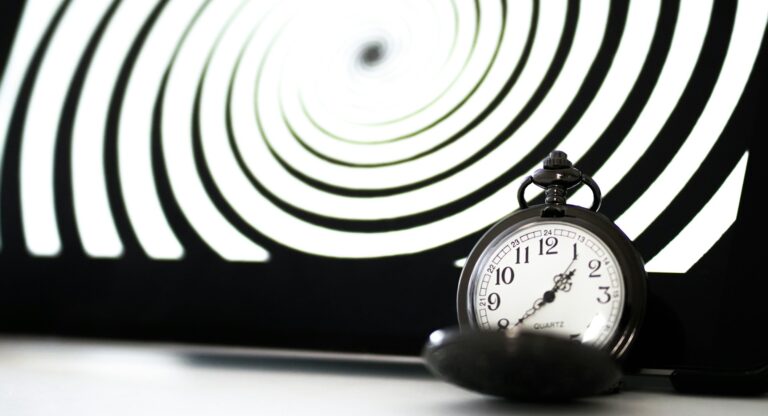Explore the connection between hypnotherapy and the conscious dream state
Lucid dreaming is the extraordinary state where you become aware that you’re dreaming, while still inside the dream. In this state of heightened consciousness, you can think clearly, make decisions, and interact with your dream world deliberately. You’re not simply a passive observer; you become the dreamer and the creator.
What Happens in a Lucid Dream?
Lucid dreaming is essentially a form of mental modelling, a simulation of reality crafted entirely by your mind. Once lucid, you remain within the dreamscape, but now you have the ability to move and act with full awareness. This opens up a world of opportunities where you can explore and consciously decide how to move within.
Unlike non-lucid dreams, where you passively go along believing in them as true, the lucid dream world brings empowerment and responsibility. Your actions are volitional and you know you are dreaming, free to act and shape the narrative.
The lucid dream world doesn’t follow physical laws. Gravity, time, or matter behave differently here. Many people choose to fly, walk through walls, or transform environments completely. You can explore symbolic dream material, speak to dream figures, or simply enjoy the freedom of a world without limits. It is your internal landscape, the metaphorical realm of your subconscious mind, where you are free to explore, learn, and evolve.

What Does Lucid Dreaming Feel Like?
If you’ve never had a lucid dream, it can be difficult to imagine the sensation.
People often describe it as:
- Like waking up inside the dream.
- More vivid than reality.
- Total freedom, exhilarating and surreal.
- A heightened, emotionally intense state of consciousness.
Your vision in a lucid dream can be just as clear as in waking life, and your sense of presence is often stronger. Some people become so excited that they wake themselves up. That’s why stabilising techniques, like rubbing your hands or spinning around, are essential once lucidity begins.
Colours are usually more vivid than in waking life, and perception of your body and surrounding may shift. You may also notice your thoughts more clearly, and the dreamscape often feels more surreal and extraordinary than daytime reality.
When Do Lucid Dreams Happen?
Lucid dreaming occurs mainly during REM sleep (Rapid Eye Movement), the phase of sleep associated with vivid dreams. During REM the eyes, which are one of the few muscles not paralysed in sleep, move rapidly left and right, signalling dream state.
REM cycles typically begin 90 minutes after falling asleep and occur several times throughout the night. Earlier cycles are shorter, while later REM periods grow longer and more intense, making early morning hours especially favourable for lucid dreaming.
Understanding how sleep cycles of light, deep and REM sleep alternate can significantly help your lucidity journey.
Interestingly, while most lucid dreams occur in later REM periods, everyone’s sleep patterns are unique. You might find your lucid dreams happening earlier in the night, especially with regular practice and intention.
REM sleep was discovered in the 1950s through EEG (electroencephalogram) research, revealing rapid brain activity that resembles wakefulness. It’s during this phase that the brain constructs immersive narratives and symbolic landscapes, ideal conditions for lucid awareness.
Why Do People Want to Lucid Dream?

Lucid dreaming is not an escape; it’s a powerful tool for inner work and transformation.
People seek lucidity for many reasons, including:
- Emotional healing and trauma integration
- Creative inspiration
- Personal growth and spiritual insight
- Skill rehearsal
- Facing fears or recurring nightmares
- Exploring consciousness and the self
- Asking deep personal or spiritual questions
Recent studies suggest that lucid dreaming may support trauma recovery, including relief from PTSD symptoms. In therapeutic contexts, people have used lucid dreams to revisit traumatic memories in a safe, symbolic way, allowing them to change outcomes or gain new perspectives.
One such study found that 85% of participants reported a remarkable decrease in PTSD symptoms after practising lucid dreaming for nightmares.
Another randomized controlled trial showed decreased PTSD symptoms following a lucid dreaming workshop.
As research grows, lucid dreaming is gaining recognition as a valid, even therapeutic, practice. Once dismissed as “fringe” or mystical, it’s now embraced by psychologists, neuroscientists, and consciousness researchers alike.
The Role of Hypnosis in Lucid Dreaming
Hypnosis and lucid dreaming are deeply connected, as both offer access to subtler states of consciousness where the subconscious becomes more receptive. Through hypnotherapy, we can encourage lucid dreaming by planting suggestions, reinforcing intentions, and releasing psychological blocks that interfere with dream recall or awareness.

Hypnotherapy for lucid dreaming works especially well when practised before sleep or during hypnagogic states (the transitional phase between waking and sleep). In this deeply relaxed state, your mind is more open to visualisation, metaphor, and suggestion, all of which are powerful tools for becoming lucid.
With regular hypnosis sessions, we can train the subconscious to:
- Recognise dream signs and triggers
- Increase dream recall
- Build the intention to become lucid
- Stay calm and stabilise the dream
- Use the dream space for healing or exploration
- Removing self-limiting beliefs
Hypnosis bridges the waking mind and the dreaming mind, helping you move closer to your lucid goals.
Modern NLP and hypnotherapy techniques can further help remove subconscious blockages and support investigation of deeper patterns around your intentions.
Start Your Lucid Dreaming Journey
As interest in lucid dreaming continues to grow, more people are seeking personalised support.
My Lucidity Boost Programmes offer one-to-one guidance to:
- Help you experience your first lucid dream
- Overcome fears or emotional blocks around lucidity
- Boost the frequency and clarity of your lucid dreams
- Use dream space for healing, transformation, and conscious exploration
Whether you’re just curious or deeply committed, hypnotherapy for lucid dreaming can accelerate your progress and bring greater meaning to your night-time experiences.
Conclusion
Lucid dreaming is much more than a night-time experience. It’s a powerful practice for self-awareness, creativity, and healing. By combining it with hypnosis and hypnotherapy, you can strengthen your ability to become lucid, remove blockages, stay grounded within the dream, and use that state for personal transformation.
The subconscious speaks in dreams. Through lucid dreaming, we learn to listen and to transform within.
If you’re ready to explore this inner world, check out my Lucidity Boost Programmes.







